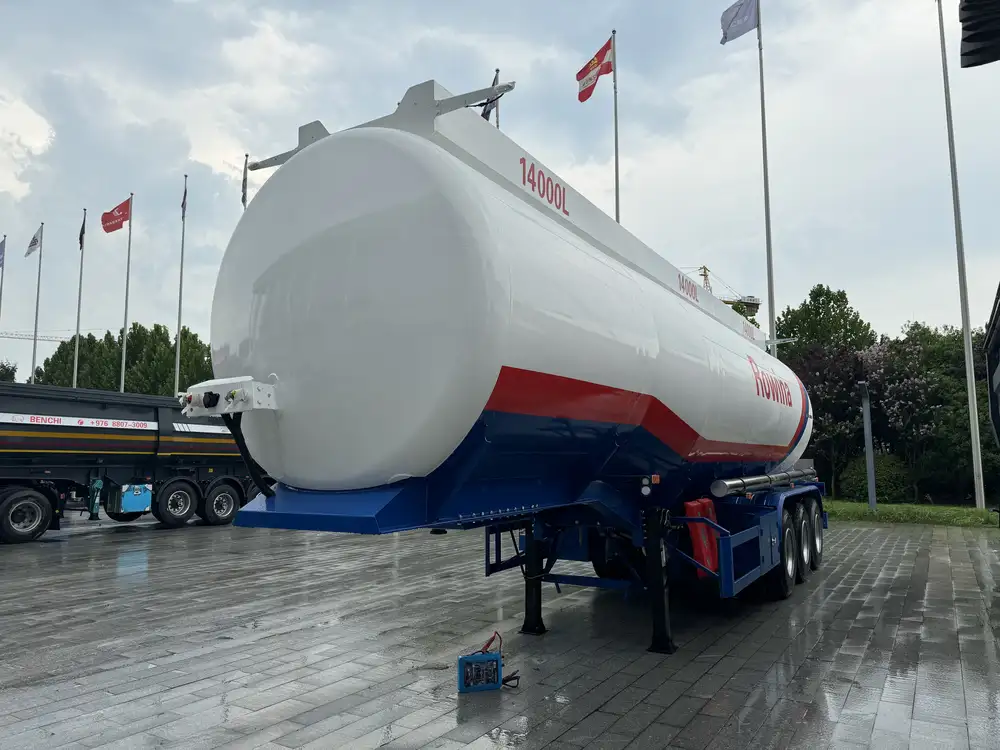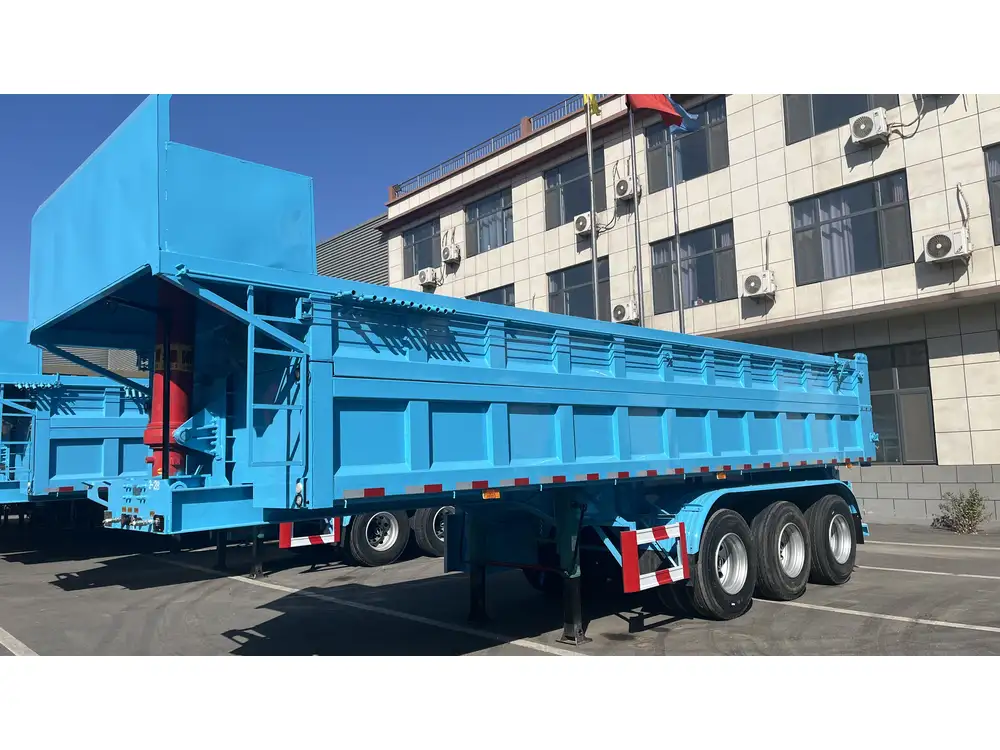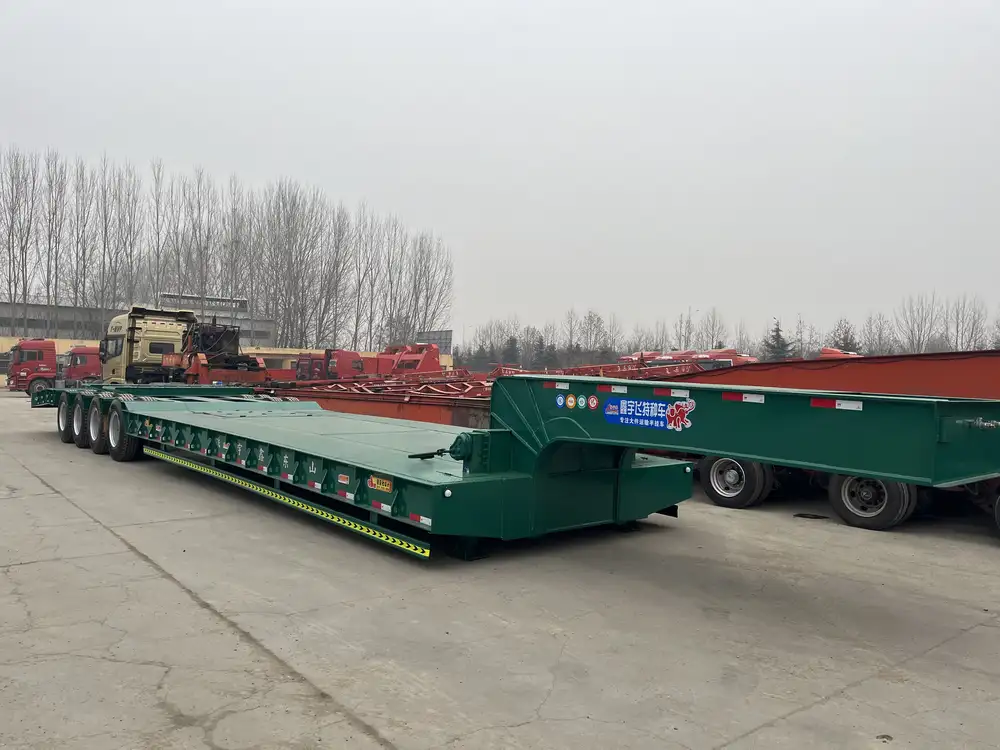What is a Hotshot Flatbed Trailer?
A hotshot flatbed trailer is an essential tool in the transportation and logistics industry, engineered for the efficient movement of freight that requires timely delivery. Unlike conventional trailers, hotshot flatbeds are designed for versatility and speed, making them ideal for small to medium-sized loads. These trailers typically range from 20 to 40 feet in length and are often used in hotshot trucking—an expedited shipping service that delivers goods faster than standard freight carriers.
Key Features of Hotshot Flatbed Trailers
| Feature | Description |
|---|---|
| Size & Capacity | Typically 20 to 40 feet long, capable of carrying 10,000 to 26,000 pounds. |
| Design | Flat platform without sides, allowing for easy loading from any angle. |
| Weight Distribution | Equipped with tandem or triple axles for better weight distribution. |
| Material | Constructed from high-strength steel or aluminum, ensuring durability and lower weight. |
| Load Securing Options | Incorporated tie-down points and stake pockets to ensure cargo stability. |

Applications of Hotshot Flatbed Trailers
Hotshot flatbed trailers are utilized across various sectors, demonstrating their versatility. Here are some common applications:
- Construction Industry: Transporting equipment, such as excavators, bulldozers, or other heavy machinery.
- Agricultural Sector: Moving oversized tools or livestock feed.
- Manufacturing: Delivering parts and materials that are not packaged in standard freight sizes.
- Automotive: Hauling vehicles, whether they are inoperable or new models awaiting delivery.
How Hotshot Flatbed Trailers Work
To efficiently transport loads, hotshot flatbed trailers operate under specific logistics principles. The process typically involves:
- Loading: The flat design allows for easy driving of machines or vehicles onto the trailer.
- Securing: Tie-down straps, chains, and ratchet straps are essential tools to ensure that cargo remains stable during transit.
- Transporting: Hotshot drivers usually employ pickup trucks or medium-duty trucks equipped to tow these trailers, allowing them to navigate various terrains efficiently.
- Delivery: Timeliness is critical; hence, hotshot freight drivers are trained to meet strict delivery schedules.
Benefits of Using Hotshot Flatbed Trailers
The advantages of utilizing hotshot flatbed trailers in logistics and transportation are numerous:
- Flexibility: Able to accommodate diverse types of cargo, making them suitable for multiple industries.
- Speed: Expedited delivery capabilities can significantly reduce transit times.
- Cost-Effectiveness: Operating costs can be lower compared to larger transportation vehicles, especially for smaller loads.
- Accessibility: Compact design permits easier travel along smaller roads not accessible by larger trucks.

Characteristics That Differentiate Hotshot Flatbed Trailers from Other Trailers
In understanding what sets hotshot flatbed trailers apart, we can consider several factors:
| Trailer Type | Hotshot Flatbed Trailer | Standard Flatbed Trailer |
|---|---|---|
| Size | Smaller, typically between 20 to 40 feet | Varies greatly, can be up to 53 feet |
| Load Type | Generally designed for specialized or smaller loads | Capable of handling bulk and oversized loads |
| Trucking Vehicle | Towed by pickup trucks for quicker access | Requires larger semi-trucks |
| Speed | Prioritizes expedited delivery | Focused on larger shipments with conventional routes |
| Cost Efficiency | More economical for smaller deliveries | Generally higher operational costs |
Choosing the Right Hotshot Flatbed Trailer
Selecting the right hotshot flatbed trailer is crucial for meeting specific transportation needs. Here’s a structured approach:
Identify Your Needs
- Type of Cargo: Determine the nature of the load—dimensions, weight, and fragility.
- Frequency of Use: Assess whether you need the trailer for occasional seasonal work or regular daily jobs.

Consider the Specifications
- Weight Capacity: Ensure it meets the requirements for the load you intend to transport.
- Length Requirements: Depending on the cargo type, choose an appropriate trailer length.
Assess Durability and Materials
- Frame Material: Steel offers strength, while aluminum can reduce weight.
- Tire Quality: Heavy-duty tires designed for hotshot trucking climates ensure more safe and efficient transportation.
Evaluate Additional Features
- Ramp Availability: A ramp can facilitate easier loading and unloading.
- Customizations: Installations for toolbox storage, upgraded suspension systems, and additional tie-downs.

Maintenance Tips for Hotshot Flatbed Trailers
Ongoing maintenance is paramount to ensure the longevity and performance of hotshot flatbed trailers. Here are essential practices:
- Regular Inspections: Check for damages or wear and tear. Ensure that wheels, brakes, and lights function correctly.
- Tire Maintenance: Maintain proper tire pressure and inspect tread depth regularly to enhance safety.
- Hitch and Coupling Checks: Inspect hitch assemblies for rust or damage to mitigate risks during towing.
- Cleaning: Periodic cleaning not only improves aesthetics but also checks for hidden damage during inspection.
Legal Considerations for Hotshot Trucking
Navigating the legal landscape is essential for anyone considering entering the hotshot trucking industry. Below are key aspects to consider:
- Operating Authority: Acquire the necessary permits and licenses to operate legally.
- Insurance Requirements: Given the nature of hotshot trucking, securing appropriate insurance is critical to protect your business and assets.
- Weight Limit Laws: Understand federal and state regulations governing vehicle weight limits to avoid fines.
Challenges of Hotshot Flatbed Trailer Transportation
While beneficial, the hotshot trucking business is not without its challenges. Recognizing potential issues can help mitigate risks involved in the industry:
- Variable Weather Conditions: Weather fluctuations can affect transit times and safety.
- Driver Shortages: Finding competent drivers familiar with the intricacies of hotshot trucking can pose difficulties.
- Regulatory Compliance: Keeping up with changing laws can be cumbersome and challenging.

Conclusion
In conclusion, hotshot flatbed trailers represent a vital component of the transportation landscape, enabling timely and efficient delivery of a wide range of cargo. With a clear understanding of their features, applications, and the logistics involved, businesses can make informed decisions regarding their use. As the demand for expedited shipping continues to grow, embracing the versatility of hotshot flatbed trailers will position operators well for success in a competitive marketplace. Companies can enhance their operational efficiency while ensuring that they meet client needs swiftly and effectively.
FAQs
What types of loads can I transport with a hotshot flatbed trailer?
Hotshot flatbed trailers can carry various loads, including machinery, vehicles, construction materials, and oversized equipment.
How do I secure loads on a hotshot flatbed trailer?
Utilizing chains, straps, and various tie-down methods is essential for keeping cargo stable and secure during transit.
Do I need special training to drive with a hotshot flatbed trailer?
While formal training is not mandatory, experience and knowledge of safe towing practices are crucial for minimizing risks on the road.
What are the common sizes available for hotshot flatbed trailers?
Common lengths typically range from 20 to 40 feet; however, custom sizes may also be available depending on manufacturer specifications.
Can hotshot flatbed trailers be customized?
Yes, many manufacturers offer customization options to meet specific operational needs, such as additional tie-down points or tool storage compartments.
Understanding these elements will undoubtedly empower operators and enthusiasts to maximize the capabilities of hotshot flatbed trailers, resulting in optimized transportation solutions.



